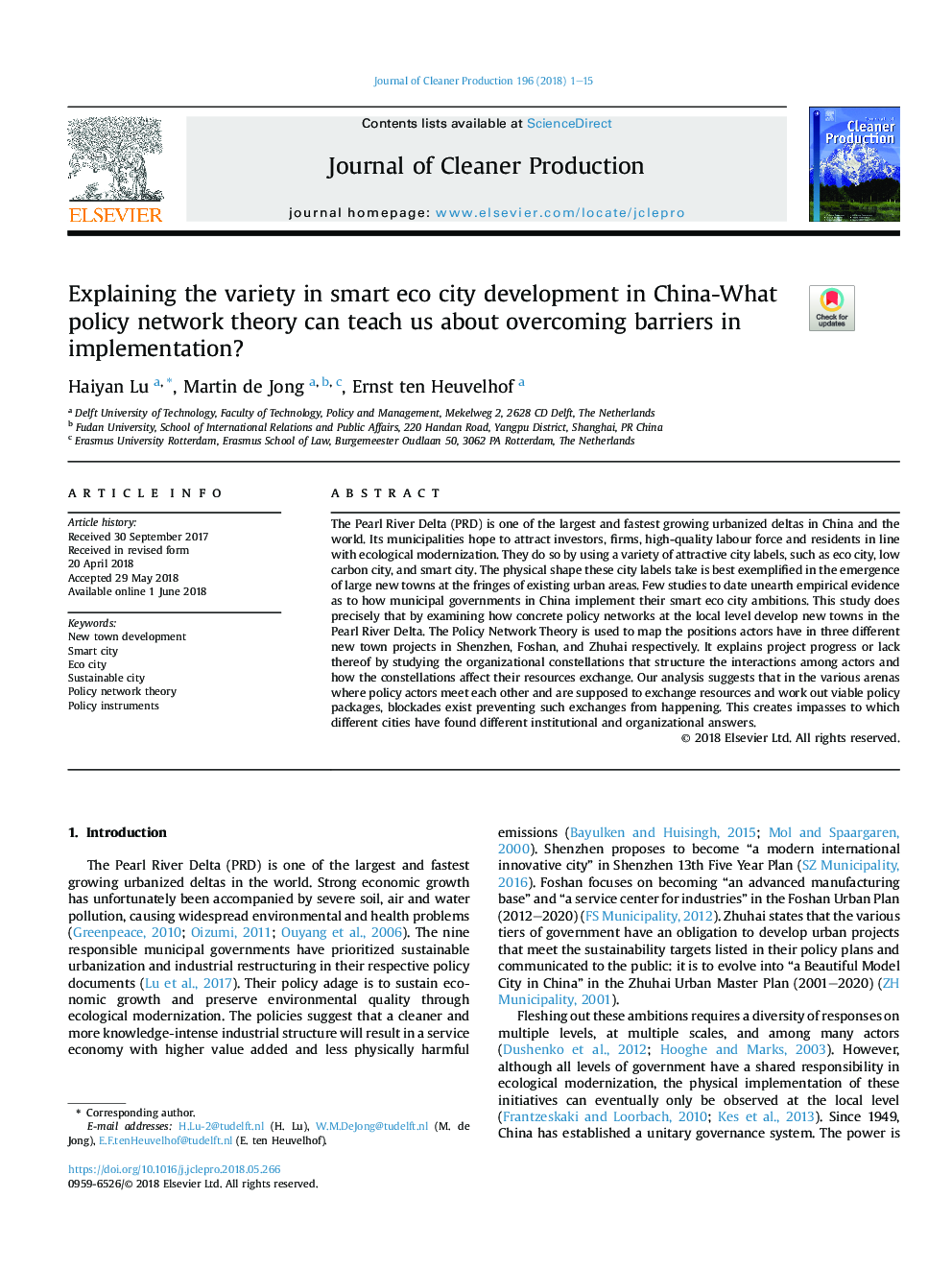| Article ID | Journal | Published Year | Pages | File Type |
|---|---|---|---|---|
| 8093734 | Journal of Cleaner Production | 2018 | 15 Pages |
Abstract
The Pearl River Delta (PRD) is one of the largest and fastest growing urbanized deltas in China and the world. Its municipalities hope to attract investors, firms, high-quality labour force and residents in line with ecological modernization. They do so by using a variety of attractive city labels, such as eco city, low carbon city, and smart city. The physical shape these city labels take is best exemplified in the emergence of large new towns at the fringes of existing urban areas. Few studies to date unearth empirical evidence as to how municipal governments in China implement their smart eco city ambitions. This study does precisely that by examining how concrete policy networks at the local level develop new towns in the Pearl River Delta. The Policy Network Theory is used to map the positions actors have in three different new town projects in Shenzhen, Foshan, and Zhuhai respectively. It explains project progress or lack thereof by studying the organizational constellations that structure the interactions among actors and how the constellations affect their resources exchange. Our analysis suggests that in the various arenas where policy actors meet each other and are supposed to exchange resources and work out viable policy packages, blockades exist preventing such exchanges from happening. This creates impasses to which different cities have found different institutional and organizational answers.
Related Topics
Physical Sciences and Engineering
Energy
Renewable Energy, Sustainability and the Environment
Authors
Haiyan Lu, Martin de Jong, Ernst ten Heuvelhof,
